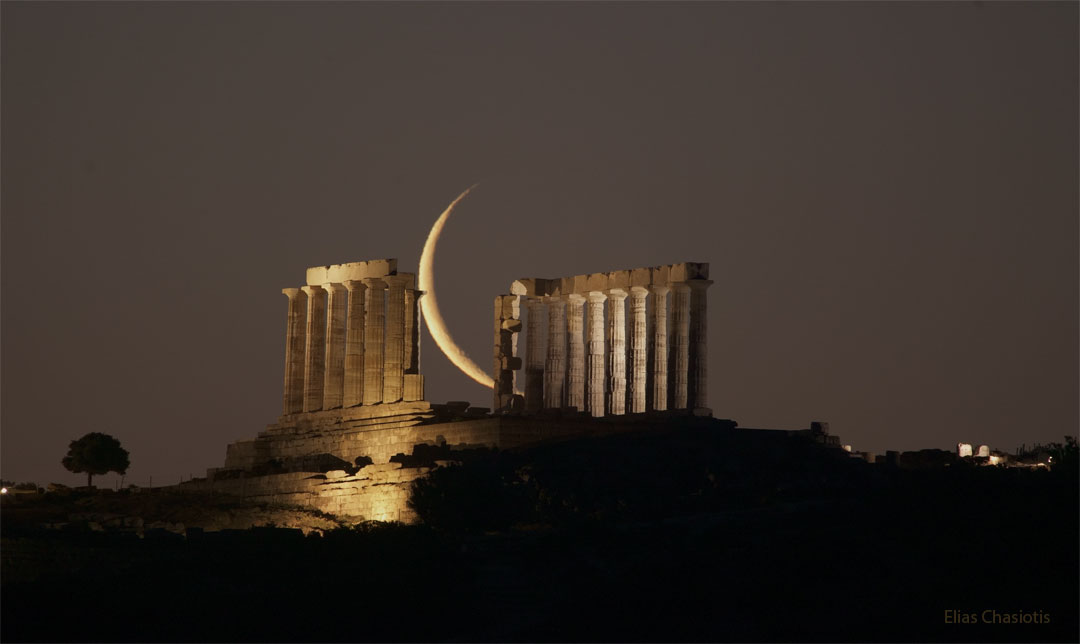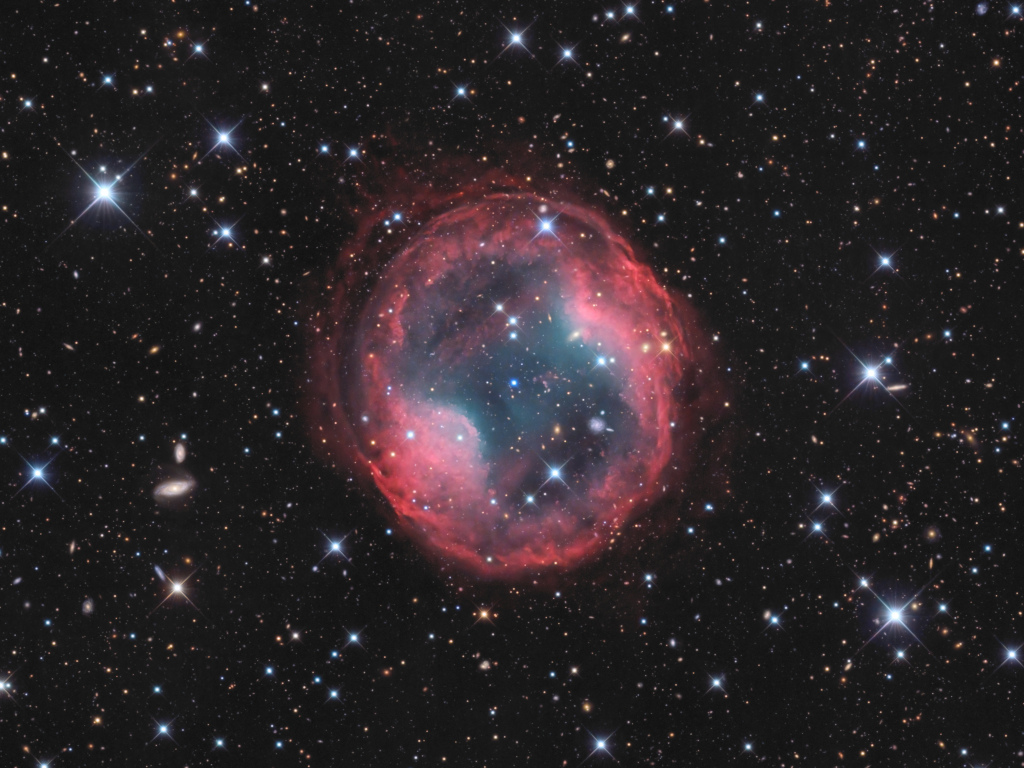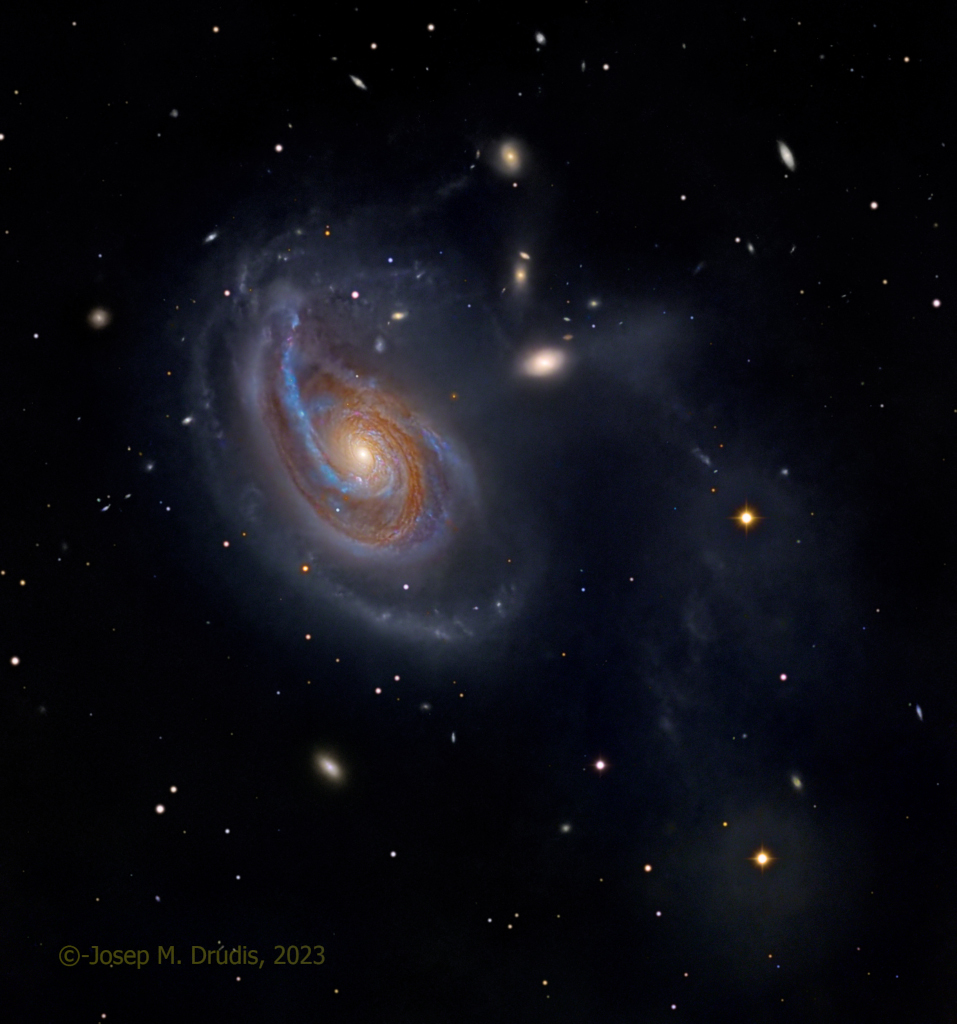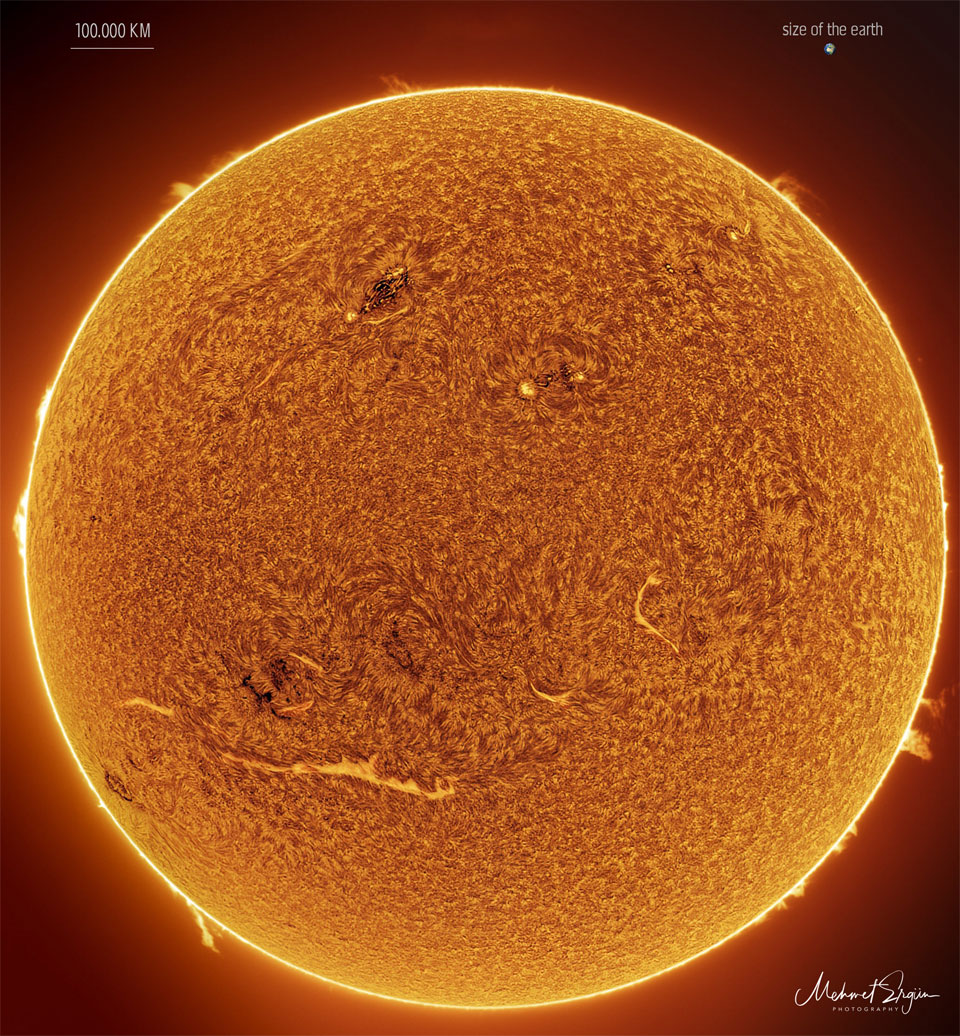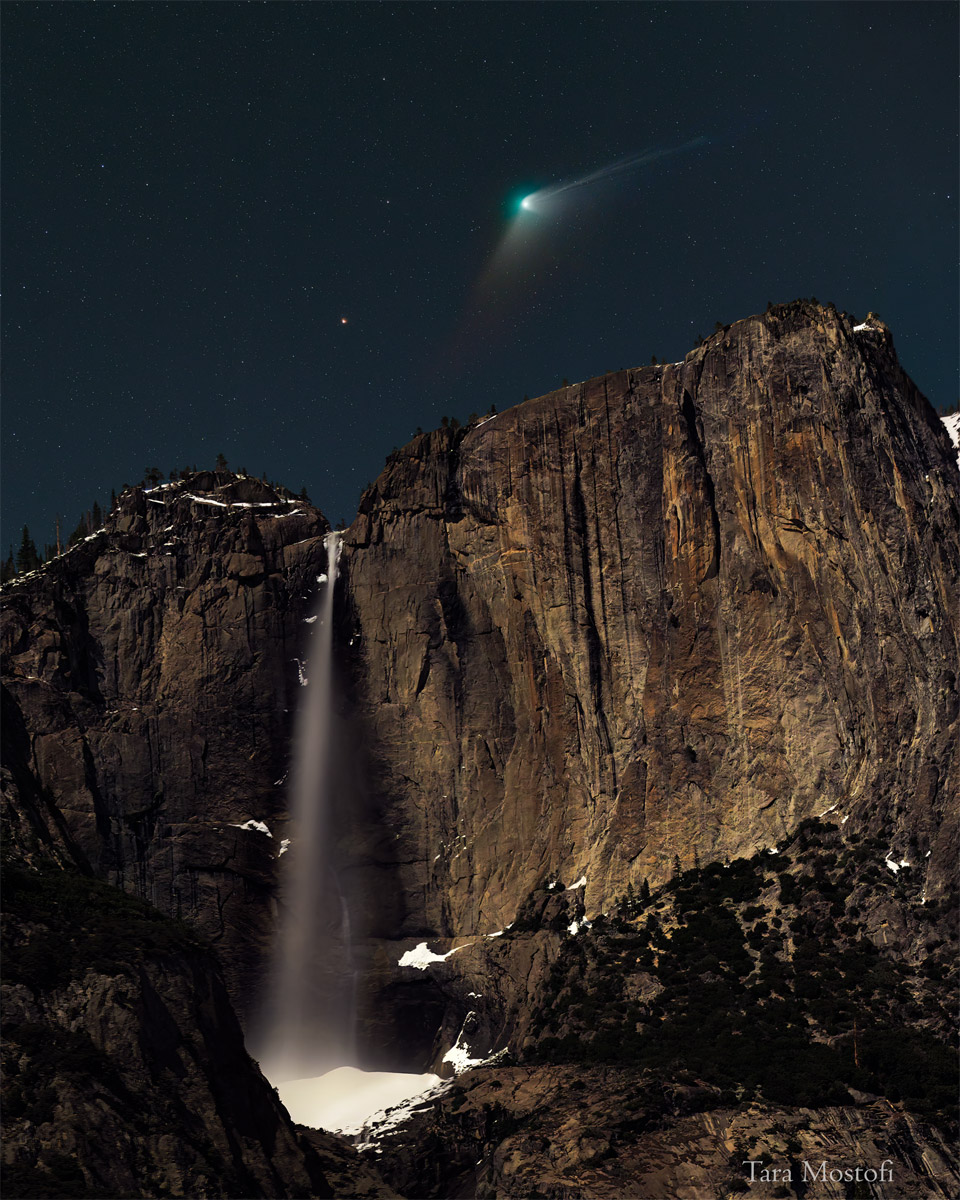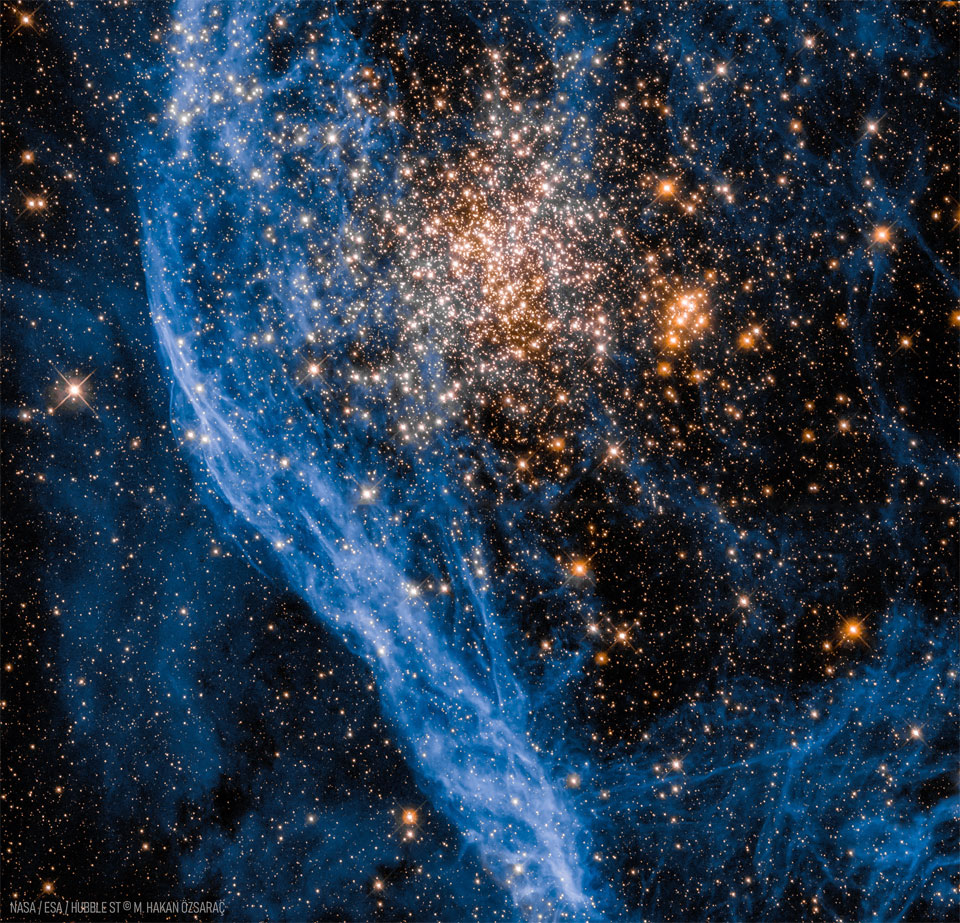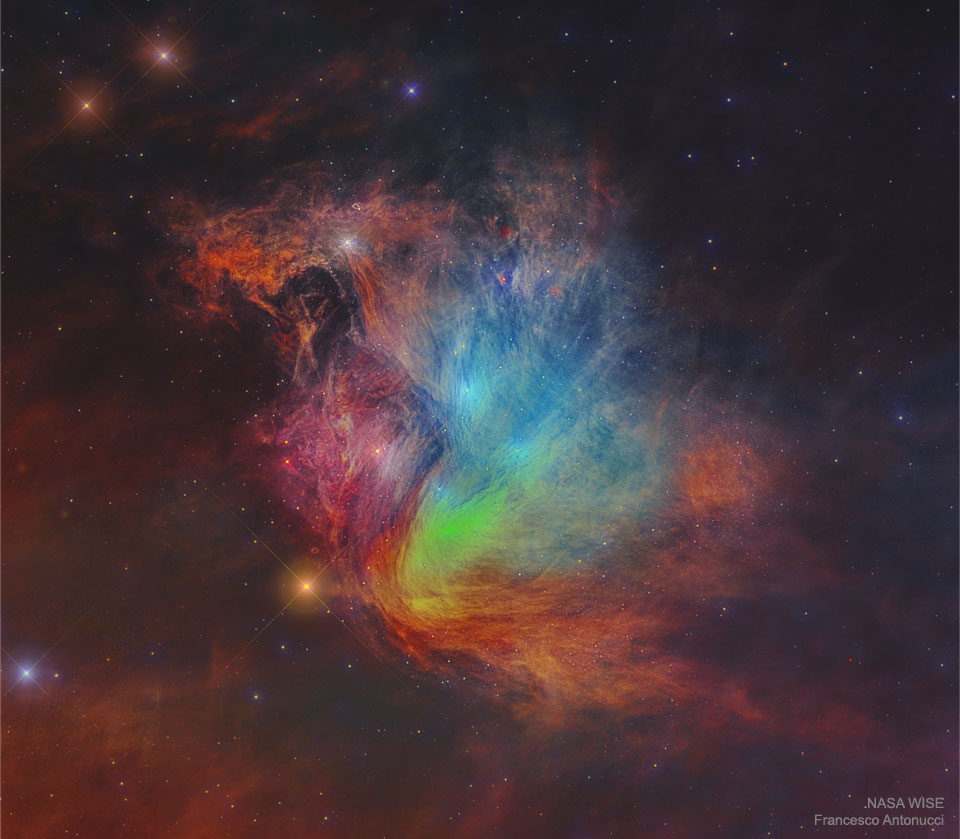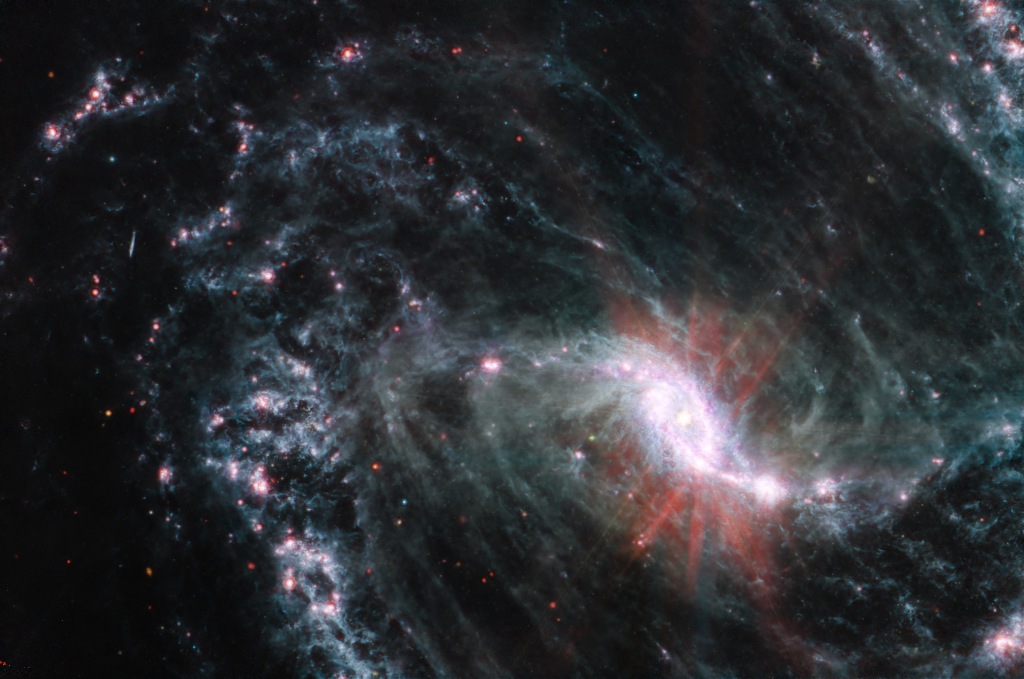Nombre total de pages vues
03/03/2023
ASTRONOMY - Crescent Moon Beyond Greek Temple
2023 February 28
Image Credit & Copyright: Elias Chasiotis
Explanation: Why is a thin crescent moon never seen far from a horizon? Because the only geometry that gives a thin crescent lunar phase occurs when the Moon appears close to the Sun in the sky. The crescent is not caused by the shadow of the Earth, but by seeing only a small part of the Moon directly illuminated by the Sun. Moreover, the thickest part of the crescent always occurs in the direction of the Sun. In the evening, a thin crescent Moon will set shortly after the Sun and not be seen for the rest of the night. Alternatively, in the morning, a crescent Moon will rise shortly before the Sun after not being seen for most of the night. Pictured two weeks ago, a crescent moon was captured near the horizon, just before sunrise, far behind remnants of the ancient Temple of Poseidon in Greece.
24/02/2023
ASTRONOMY - Jones-Emberson 1
023 February 24
Image Credit & Copyright: Serge Brunier, Jean-François Bax, David Vernet, C2PU/OCA
Explanation: Planetary nebula Jones-Emberson 1 is the death shroud of a dying Sun-like star. It lies some 1,600 light-years from Earth toward the sharp-eyed constellation Lynx. About 4 light-years across, the expanding remnant of the dying star's atmosphere was shrugged off into interstellar space, as the star's central supply of hydrogen and then helium for fusion was finally depleted after billions of years. Visible near the center of the planetary nebula is what remains of the stellar core, a blue-hot white dwarf star. Also known as PK 164 +31.1, the nebula is faint and very difficult to glimpse at a telescope's eyepiece. But this deep broadband image combining 22 hours of exposure time does show it off in exceptional detail. Stars within our own Milky Way galaxy as well as background galaxies across the universe are scattered through the clear field of view. Ephemeral on the cosmic stage, Jones-Emberson 1 will fade away over the next few thousand years. Its hot, central white dwarf star will take billions of years to cool.
23/02/2023
ASTRONOMY - Arp 78: Peculiar Galaxy in Aries
2023 February 23
Image Credit & Copyright: Josep Drudis
Explanation: Peculiar spiral galaxy Arp 78 is found within the boundaries of the head strong constellation Aries. Some 100 million light-years beyond the stars and nebulae of our Milky Way galaxy, the island universe is an enormous 200,000 light-years across. Also known as NGC 772, it sports a prominent, outer spiral arm in this detailed cosmic portrait. Tracking along sweeping dust lanes and lined with young blue star clusters, Arp 78's overdeveloped spiral arm is pumped-up by galactic-scale gravitational tides. Interactions with its brightest companion galaxy, the more compact NGC 770 seen above and right of the larger spiral, are likely responsible. Embedded in faint star streams revealed in the deep telescopic exposure, NGC 770's fuzzy, elliptical appearance contrasts nicely with spiky foreground Milky Way stars in matching yellowish hues.
22/02/2023
ASTRONOMY - Our Increasingly Active Sun
2023 February 22
Image Credit & Copyright: Mehmet Ergün
Explanation: Our Sun is becoming a busy place. Only two years ago, the Sun was emerging from a solar minimum so quiet that months would go by without even a single sunspot. In contrast, already this year and well ahead of schedule, our Sun is unusually active, already nearing solar activity levels seen a decade ago during the last solar maximum. Our increasingly active Sun was captured two weeks ago sporting numerous interesting features. The image was recorded in a single color of light called Hydrogen Alpha, color-inverted, and false colored. Spicules carpet much of the Sun's face. The brightening towards the Sun's edges is caused by increased absorption of relatively cool solar gas and called limb darkening. Just outside the Sun's disk, several scintillating prominences protrude, while prominences on the Sun's face are known as filaments and show as light streaks. Magnetically tangled active regions are both dark and light and contain cool sunspots. As our Sun's magnetic field winds toward solar maximum over the next few years, whether the Sun's high activity will continue to increase is unknown.
21/02/2023
ASTRONOMY - Comet ZTF over Yosemite Falls
2023 February 21
Image Credit & Copyright: Tara Mostofi
Explanation: They are both falling. The water in Yosemite Falls, California, USA, is falling toward the Earth. Comet ZTF is falling toward the Sun. This double cosmic cascade was captured late last month as fading Comet C/2022 E3 (ZTF) had just passed its closest to planet Earth. The orange star just over the falls is Kochab. With the exception of a brief encounter with a black bear, the featured image was a well-planned composite of a moonlit-foreground and long-duration background exposures - all designed to reconstruct a deep version of an actual single sight. Although Comet ZTF is now fading as it glides back to the outer Solar System, its path is determined by gravity and so it can be considered to still be falling toward the Sun -- but backwards.
20/02/2023
ASTRONOMY - NGC 1850: Not Found in the Milky Way
2023 February 20
Image Credit: NASA, ESA and P. Goudfrooij (STScI); Processing: M. H. Özsaraç (Türkiye Astronomi Derneği)
Explanation: There is nothing like this ball of stars in our Milky Way Galaxy. This is surprising because, at first glance, this featured image by the Hubble Space Telescope suggests that star cluster NGC 1850's size and shape are reminiscent of the many ancient globular star clusters which roam our own Milky Way Galaxy's halo. But NGC 1850's stars are all too young, making it a type of star cluster with no known counterpart in the Milky Way. Moreover, NGC 1850 is also a double star cluster, with a second, compact cluster of stars visible here just to the right of the large cluster's center. Stars in the large cluster are estimated to be 50 million years young, while stars in the compact cluster are younger still, with an age of about 4 million years. A mere 168,000 light-years distant, NGC 1850 is located near the outskirts of the Large Magellanic Cloud galaxy. The glowing gas filaments across the image left, like supernova remnants in our own galaxy, testify to violent stellar explosions and indicate that short-lived massive stars have recently been present in the region.
19/02/2023
ASTRONOMY - Seven Dusty Sisters in Infrared
2023 February 19
Image Credit: NASA, WISE, IRSA, Processing & Copyright : Francesco Antonucci
Explanation: Is this really the famous Pleiades star cluster? Known for its iconic blue stars, the Pleiades is shown here in infrared light where the surrounding dust outshines the stars. Here three infrared colors have been mapped into visual colors (R=24, G=12, B=4.6 microns). The base images were taken by NASA's orbiting Wide Field Infrared Survey Explorer (WISE) spacecraft. Cataloged as M45 and nicknamed the Seven Sisters, the Pleiades star cluster is by chance situated in a passing dust cloud. The light and winds from the massive Pleiades stars preferentially repel smaller dust particles, causing the dust to become stratified into filaments, as seen. The featured image spans about 20 light years at the distance of the Pleiades, which lies about 450 light years distant toward the constellation of the Bull (Taurus).
18/02/2023
SANTé DELICIEUSES HERBES AROMATIQUES - La ciboulette, riche en vitamine K et antioxydants
ASTRONOMY - Barred Spiral Galaxy NGC 1365 from Webb
2023 February 18
Image Credit: NASA, ESA, CSA, Janice Lee (NOIRLab) - Processing: Alyssa Pagan (STScI)
Explanation: A mere 56 million light-years distant toward the southern constellation Fornax, NGC 1365 is an enormous barred spiral galaxy about 200,000 light-years in diameter. That's twice the size of our own barred spiral Milky Way. This sharp image from the James Webb Space Telescope's Mid-Infrared Instrument (MIRI) reveals stunning details of this magnificent spiral in infrared light. Webb's field of view stretches about 60,000 light-years across NGC 1365, exploring the galaxy's core and bright newborn star clusters. The intricate network of dusty filaments and bubbles is created by young stars along spiral arms winding from the galaxy's central bar. Astronomers suspect the gravity field of NGC 1365's bar plays a crucial role in the galaxy's evolution, funneling gas and dust into a star-forming maelstrom and ultimately feeding material into the active galaxy's central, supermassive black hole.
SANTé/MEDECINE - La grossesse mois par mois - 8ème et 9ème mois
Le fœtus à 8 et 9 mois : dernière étape avant l'accouchement Le fœtus se place en prévision de l'accouchement. Il prend des forces ...

-
2022 September 26 All the Water on Planet Earth Illustration Credit: Jack Cook, Adam Nieman, Woods Hole Oceanographic Institution ; Data ...
-
2021 August 11 Mammatus Clouds over Saskatchewan Image Credit & Copyright: Michael F Johnston Explanation: When do cloud bottoms appe...
